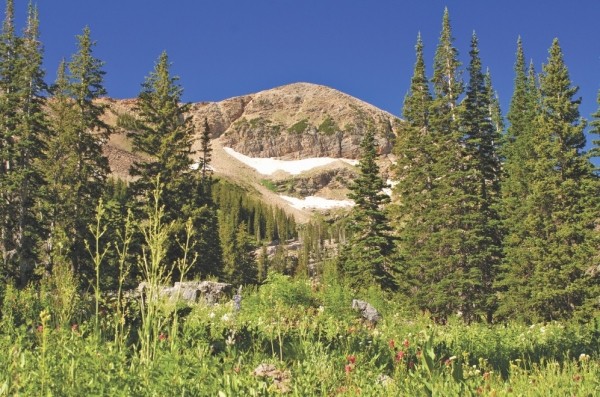
On a late-March weekend, I took my skis up Millcreek Canyon for a nice, mellow backcountry run in the new snow. Driving past Rattlesnake Gulch—the first trailhead closest to the tollbooth—I looked up at the snow-covered slope. You’re crazy, I thought. How could you even consider writing a column about trail-running this early in the year? But driving by the following Monday, again with skis, I found Rattlesnake clear (if not yet dry).
That’s the nature of spring in the Wasatch: snow one day, and sun the next. Outdoors people have to juggle a bunch of sports, gear and clothes to make use of the shifting 24-hour conditions. As winter disappears from the lower foothills, trail-running is again possible. But you can’t go just anywhere. North-facing slopes, narrow canyons and timber canopy all hold the wet late into the season. Choose trails wisely—and even then, get ready for some mud.
I didn’t park very carefully when I pulled into the Rattlesnake parking lot a few days before the most recent snowstorm. Opening the car door, my thin, mesh, minimalist running shoes met a small brown lake below. Dry land was nowhere in site. Score one for wet and soaking.
Still dry from the ankles up, the dogs and I started up the steep Rattlesnake draw with another goal in mind: the Pipeline trail, a gentle traverse that runs five and a half miles from the base of Millcreek to Elbow Fork, just past the winter-closure gate. I chose my route for this first run of the season carefully. I didn’t want a strenuous climb. I also didn’t want a slip & slide.
Pipeline runs along the north side of the canyon—the dry side, apparent from the vegetation, which lacks evergreen trees but has an abundance of gambel oak and mountain mahogany. Before reaching the safety of the traverse, I first had to brave the narrow draw up to it. Within the first half mile, I encountered thick mud and sheets of gravely snow-slush, but only in patches, so I pushed on.
When the trail forked into Pipeline, I turned up-canyon toward the Grandeur Peak trail. Here, the track solidified into dust and rock. Where direct sun hit the earth, I could feel the heat evaporating the canyon’s moisture, and reminded myself not to try running this stretch at the same time (about 2 p.m.) in the late spring or summer.
As the trail wound with the curves of the slope, it drew into areas of shade. These sections all held snow. My ankles felt weak. The lack of friction between rubber soles and slush threatened disaster. I pushed to maintain my stride, but I slipped. I escaped with no major injuries, but score two for wet and soaking.
Briskly tiptoeing over the remainder of the melting snow patches, I continued. Thanks to the dry air, my shoes and socks dried almost before I rounded the next corner; I tallied one for myself.
In another small victory, I realized, nearing my turning-back point, I had not encountered another runner on the trail. Then, as if on cue, a bobbing form turned the corner in front of me. I felt the familiar pang of jealousy.
Am I the only person in this city who is territorial about her trails? Doesn’t encountering scores of other users defeat the purpose? Isn’t trail time meant to help us forget that we live in a city?
As we passed, I was selfishly pleased to note my fellow runner’s heavy breathing and his rivulets of face sweat. But, in all honesty, I must have looked about the same. It takes a while to regain your running legs and work back into grace and ease. It hurts, but enjoy it now, I thought to myself—before there are more runners out here than snakes.